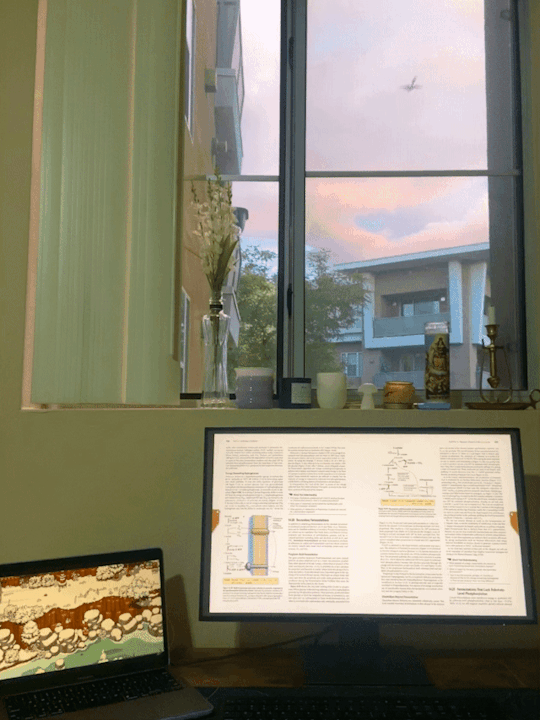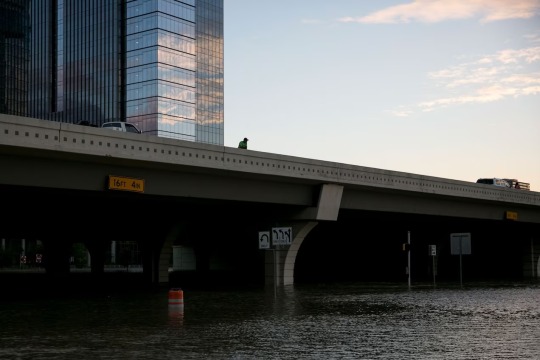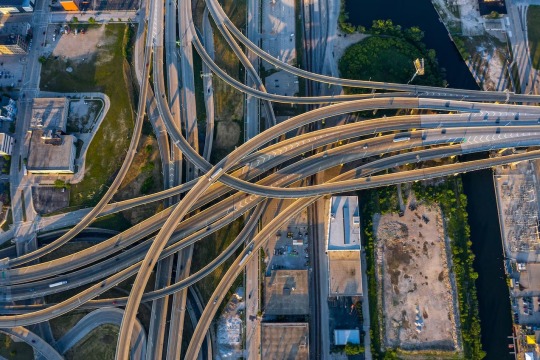#Environmental Engineering
Explore tagged Tumblr posts
Text
Scientists have uncovered a new source of hazardous "forever chemical" pollution: the rechargeable lithium-ion batteries found in most electric vehicles. Some lithium-ion battery technologies use a class of PFAS chemicals, or per-and polyfluoroalkyl substances, that helps make batteries less flammable and conduct electricity. Scientists found high levels of these PFAS in air, water, snow, soil, and sediment samples near plants that make those chemicals in the US, Belgium, and France, according to a peer-reviewed study in the journal Nature Communications.
Continue Reading.
#Science#Environment#Chemistry#Environmental Engineering#Pollution#Electric Vehicles#Perfluoroalkyl and Polyfluoroalkyl Substances#PFAS
74 notes
·
View notes
Text
list of pet names that are Tumblr-core (will be updating whenever my imagination works)
- unemployed fish soap
- vodka tampon
- sonic quasi-cup
- vanilla extract
- bells, the instrument
- live, laugh, lorb
- semioptics
- the void
- environmental engineering
- juice
- zoominator 2000X
- what's their name
- gall wasp
- Bartholomew, child of Demetrius II (they arent actually son of Demetrius II)
- car hammer explosion
- gun from Chekhov
#what do i tag this#untaggeable#cat names#pet names#dog names#lizard names#bird names#domestic animals#idfk#juice???#vodka tampon#sonic#vanilla extract#vaniIla extract#vanilIa extract#vaniIIa extract#gall wasp#chekhov's gun#car hammer explosion#semioptics#environmental engineering#bells#the void#phineas and ferb#orb#live laugh love#unreality
30 notes
·
View notes
Text
Here is a list of rules I have learned working in a lab and being in lab classes over the years. Most of them I or someone around me learned the hard way.
LAB RULES
1. Change your gloves
2. Do not eat any samples. Even if they are food.
3. LABEL! EVERYTHING!
4. Do not leave any liquids precariously over the edge of a counter
5. The heat glove cannot touch things that are 550 Celsius
6. Add acid to water, never water to acid
7. Always have a spare pair of jeans
#guess which one I learned today!#it was the jeans one#98% sulfruic acid will do a number on your jeans#but that’s why you wear jeans#so it doesn’t do a number on your skin#lab safety#environmental engineering#chemistry#chem lab#grad school#science#engineering#lab rules#wendy's posts
11 notes
·
View notes
Text

1.25.2024
Hello friends :) The new semester is underway, and off to a good start so far. For classes, I'm taking Biotransformations, Soil and Groundwater Remediation, Carbon Storage, and the environmental engineering seminar. I've also been in the lab a lot more, and am almost ready to begin my first major experiments here. It's nice to feel like I am settling into my program and new city; both have been bringing me a lot of happiness lately. Wishing everyone a fulfilling 2024!
48 notes
·
View notes
Text
Strange Objects Raining Down Across America Florida | What Is the Government Hiding?
youtube
#climate change#Climate engineering#geoengineering#environmental engineering#climate collapse#climate crisis#environmental manipulation#colony collapse syndrome#save the bees#agriculture#weather manipulation#chemical warfare#weather weapons#biowarfare#Youtube
3 notes
·
View notes
Text
Nice to meet you my name is Jean-Paul
i am 19 years old and my pronouns are he/him and it/its.
i'm replacing a lot of my about me pinned post with a strawpage link because it's easier to update across all my socials then. you can also anonymously send me stuff with it if you please
https://jeanpaul.straw.page/
Addendum specifically for Tumblr
I organize my blog with tags for every game/media i talk about.
Extreme saucy stuff gets tagged "#NSFW", do not interact with those posts if you are a minor.
Sometimes I complain about Darkest Dungeon® II. Please mute "#dd2 bitching" if that triggers you.
Sometimes I complain about things that slightly inconvenience me IRL. Mute the tag "#whining" if you don't want to see them.
#pinned tweet#introduction#apex legends#stardew valley#darkest dungeon#titanfall 2#terraria#zero escape#ai the somnium files#engineering student#environmental engineering#math#science
4 notes
·
View notes
Text
#nature#environment#climate change#environmental engineering#hope for the future#energy#energy production#solarpunk
28 notes
·
View notes
Text
Understanding Zero Energy Buildings: A Sustainable Solution
Key Points Zero energy buildings produce as much energy as they consume using renewables. They use efficient designs and technologies like solar panels and heat pumps. They’re becoming more common to fight climate change and save energy costs. What Are Zero Energy Buildings? Zero energy buildings are structures designed to have no net energy consumption over a year. This means they generate…
#Building Performance#Clean Energy Solutions#climate-change#Eco-Friendly Buildings#energy#Energy Efficiency#Environment#Environmental Engineering#Green Building Design#Renewable Energy#sustainability#Sustainable Architecture#Sustainable Construction#Zero Energy Buildings
2 notes
·
View notes
Text

A bulldozer works to maintain Chicago's underground. More frequent and intense storms pose danger to aging infrastructure like these tunnels. Photograph By Keith Ladzinski, National Geographic Image Collection
Here’s What Worries Engineers The Most About U.S. Infrastructure
Water and sewer systems built in the mid-19th century weren't meant to handle the demands of modern cities, and many bridges and levees have aged well past their intended lifespan.
— By Alissa Greenberg | July 17, 2023
Christine Kirchhoff’s family were preparing to move into a new house when Hurricane Harvey hit Houston in 2017. Then the massive storm dumped 50 inches of rain on the area in just a few days, leaving two nearby reservoirs so full that their operators were forced to open the floodgates. Kirchhoff’s family had to be evacuated by boat. Both their original and new houses were inundated.
As an associate professor of civil and environmental engineering at Pennsylvania State University, Kirchhoff spent a lot of time thinking about water even before it swallowed her family’s livelihood. She is part of the legion of professionals behind the complex, often invisible systems that support American life: dams, roads, the electric grid, and much more.
For the last 25 years, the American Society of Civil Engineers has been sounding the alarm on the state of that infrastructure across the country. In their most recent assessment, for example, transit scored a D- and hazardous waste a D+. It’s an expensive problem to ignore. The ASCE estimates current infrastructure conditions cost the average family $3,300 a year. “Everyone is paying whether they know it or not,” Kirchhoff says.
Train derailments, highway and bridge collapses, and dam failures have become increasingly common. But which areas are civil engineers most concerned could cause imminent catastrophe, and what can we do about it? Kirchhoff and other infrastructure experts weigh in.
Water Contamination Crises are Already Here
The engineers we talked to agreed: our water systems are in trouble. Both those that protect us from water as a hazard (stormwater, dams, levees, bridges) and those that help us manage water as a resource (drinking water, wastewater, inland waterways) are in grim shape.

Streets were flooded after Hurricane Harvey hit Houston in 2017. Photograph By Ilana Pancih-Linsmam, The New York Times/Redux
The United States’ 2.2-million-mile drinking water and 800,000-mile sewer system was developed in part in response to the widespread waterborne diseases of the mid nineteenth century, Kirchhoff says. Maintenance has lagged woefully behind since then; some older areas, including some cities in the northeast, still use century-old wooden pipes. And many more of our pipes nationwide are still made of lead.
A water system designed for yesterday’s climate and to filter yesterday’s contaminants is especially problematic in a world of increasing demand, fiercer and more frequent storms, and “forever” chemicals. The result: boil orders, water main breaks, and sewer overflow, plus 15 percent of our water treatment plants working at or over capacity. These issues, combined with the toxicity of lead pipes, lead to water crises like the one that continues to plague Flint, Michigan.
Amlan Mukherjee, the director of sustainability focusing on infrastructure at WAP Sustainability Consulting, recommends focusing on these pipes—swapping lead for PVC or other materials and fixing the leaks that spill some 6 billion gallons of treated water a day—as one high priority fix.
Our coastline is also dotted with facilities storing hazardous oil and other chemical waste cocooned in donut-shaped earthen structures, adds Bilal Ayyub, a professor of civil and environmental engineering at the University of Maryland at College Park—structures that, he notes, could be made of concrete. Because of soil’s vulnerabilities, he worries that dramatic rainfall or a storm surge could destroy these structures, resulting in a release of toxic chemicals “bigger than the Exxon Valdez spill by orders of magnitude.”
His worst-case scenario has already happened at least once, when floodwaters from Hurricane Harvey ate through the earthen container at the San Jacinto River Waste Pits, releasing noxious waste into a nearby river.
Physical Collapse is Happening Now
Meanwhile, the number of high-hazard-potential dams in the United States now tops 15,000. Many were built during or before the WWII era and have been widely neglected since then. And when it comes to bridges, “there are cautionary tales all over,” says Maria Lehman, president of ASCE and vice chair of the Biden Administration’s National Infrastructure Advisory Council. “Every county in the country has a list of bridges that, if they had money, they would replace tomorrow.”
Our 617,000 bridges include not just those spanning mighty rivers but also every highway overpass and minor link across a stream—and close to one tenth of them are significantly compromised. “If you have to think in terms of catastrophe, we’re already there,” Mukherjee says. In 2007, the collapse of an I-35W bridge in Minnesota killed 13 people and injured 145. More recently, a six-lane bridge over the Mississippi was closed for three months in 2021, disrupting interstate travel and shipping because an inspector missed a significant crack. Americans drive 178 million trips on structurally deficient bridges each day.

Every day, millions of Americans travel across bridges and overpasses, like the Marquette Interchange in Milwaukee, that may be structurally deficient. Photograph By Keith Ladzinski, National Geographic Image Collection
Yet the US spends only 1.5-2.5 percent of its GDP on infrastructure, proportionately less than half of what the European Union spends, Lehman says. This long-term lack of funding has run out the clock on many solutions. Many of our bridges were built to last 30-50 years, but nearly half are at least half a century old. The average age of our levees is also 50; our dams average 57.
Now, extreme weather is intensifying just as structures fail. We’ve already seen consequences in the devastation of Hurricane Katrina in 2005, for example, when collapsing levees inundated 80 percent of New Orleans, killing hundreds, or in the failure of an under-inspected dam in Edenville, Michigan, which flooded the region and destroyed thousands of homes in 2020. The trend is set to continue: after Superstorm Sandy engulfed New York City transit, Ayyub helped study similar risks in Washington, D.C and Shanghai. His models showed widespread flooding that could swamp D.C. metro stations and in severe cases even reach “the backyard of the White House.”
The Future of U.S. Infrastructure
Mukherjee is optimistic about the use of new technology to solve some of these issues, though adoption has been slow. Drones can provide human inspectors with up-close views of areas they can’t reach themselves and reduce chance of human error; a drone on an unrelated project captured footage of the Mississippi bridge crack two years before its discovery.
Ayyub has also worked with North American freight railroads to find weak links using computer modeling, combing through thousands of stations to “identify exactly which point if it fails will have the biggest impact,” he says. Why not do the same with our power grid and waterways?
One piece of good news: in 2021, Congress passed the Bipartisan Infrastructure Law, which provides $1.2 trillion over five years for the ailing systems that help American society run, the largest federal investment in US history. It was a major victory. “Every president for the last eight presidents said we should spend a lot of money—like a trillion dollars—on infrastructure, and none of them delivered,” Lehman says.
Unless it is renewed regularly, though, this funding will barely stop the bleeding. And meanwhile, across the country, families like Kirchhoff’s (who after a difficult year were able to rebuild both the destroyed houses) struggle to recover from a relentless march of disasters, many of them preventable. It’s time for the US to learn the lessons drawn from of a century of neglect, Lehman argues, and begin maintaining the systems that makes so much of American life possible while they’re still in working condition.
“If you have a leak in your roof, you go up there, find it, replace the shingles, put on a little tar” she says. “If you let it go, it’s not going to be a little fix: it’s going to be a replacement.”
#US 🇺🇸#Infrastructure#Alissa Greenberg#Engineers#Christine Kirchhoff#Environmental Engineering#Pennsylvania State University#American Society of Civil Engineers#Contamination#Bilal Ayyub#University of Maryland#Amlan Mukherjee#Exxon Valdez#Hurricane Harvey#Biden Administration’s National Infrastructure Advisory Council#Mississippi River#European Union 🇪🇺#Hurricane Katrina#New Orleans#Superstorm Sandy#New York City#Washington D.C.#White House#Infrastructure Law
3 notes
·
View notes
Text
I am again recommending the book EAGER! It is a great read about beavers, their history, and their role as environmental engineers (mostly in north america, but a bit in europe also).
https://english.radio.cz/beavers-build-planned-dams-protected-landscape-area-while-local-officials-still-8841536

A beaver colony in the Brdy region has gained overnight fame by building several dams in the Brdy protected landscape area, creating a natural wetland exactly where it was needed. It saved the local authorities 30 million crowns, and has the public cracking jokes about public administration and red tape.
The administration of the Brdy protected landscape area, which had gained approval for the 30 million crown project, was dealing with red tape and seeking the respective building permits from the Vltava River Basin authorities when the dam project was completed almost overnight by a local colony of beavers.
They could not have chosen their location better –erecting the dams on a bypass gully that was built by soldiers in the former military base years ago, so as to drain the area. The revitalization project drafted by environmentalists was supposed to remedy this. Bohumil Fišer, head of the Brdy Protected Landscape Area Administration says Nature took its course and the beavers created the necessary biotope conditions practically overnight.
27K notes
·
View notes
Text
My engineering senior design project is due in less than 2 hours and while I, incredibly, have all of my work done despite the procrastination for some reason my group mates largely don’t and a lot of what we have to do is based on each other’s work!!! Why the hell did I agree to study civil engineering?!
#civil engineering#environmental engineering#college#fucking group projects#i am going to scream#wendy's posts
5 notes
·
View notes
Text
i need a support group for environmental engineers tbh because idk how to read about the horrible effects of compounds still used WIDELY and not have a fucking meltdown like. it's in my blood it's in everyone's blood it will be in our babies' blood.
7 notes
·
View notes
Text
Why Silt Soil Causes Foundation Cracks
Are cracks appearing in your building’s foundation or walls?If your structure stands on silt soil, you’re likely dealing with one of the most overlooked yet dangerous soil types for construction. This guide offers a deep technical breakdown of why silt soil causes cracks—and how engineers, builders, and homeowners can prevent long-term damage using modern soil mechanics principles What is Silt…
0 notes
Text
Title: SUNKISS: A Solar-Powered Atmospheric Carbon Scrubbing Framework
Abstract: In an age where climate change solutions are often overengineered or underdelivered, we propose a refreshingly simple concept: use solar farms not to power cities, but to directly power large-scale atmospheric carbon scrubbers. We call this the SUNKISS model: Solar-Utilized Negative-Karbon Integrated Scrubbing System. The concept removes the middlemen—grids, batteries, and storage…
#100 MW farm#abandoned industrial zones#atmospheric#atmospheric cleansing#Atmospheric CO2 Removal#battery storage.#brownfields#Carbon#carbon Scrubbing#Carbon Sequestration#Direct Air Capture#Direct Air Capture Units#electricity generation#Environmental Engineering#grid stabilization#Local Maintenance Infrastructure#Photovoltaic Applications#Photovoltaic Arrays#round-the-clock#Solar#Techno-Philosophical Implications#Thermodynamic Efficiency#Thermodynamic Tradeoffs
0 notes
Text
Job - Alert 💡

🌍 PhD Opportunity in Digital Twins for Transportation! 🚦
At AIT Austrian Institute of Technology – Austria’s largest applied research organization, we’re tackling climate change and digital transformation through cutting-edge innovation. Our Digital Resilient Cities team in Vienna, in partnership with Technische Universität München, is offering a funded PhD position on:
📍 Location: Vienna (with regular exchange in Munich)
Join us to develop smarter, greener cities by bridging transport and urban planning using digital twins!
👉 Apply now via: https://www.academiceurope.com/job/?id=7657
#hiring#jobs#science#jobseekers#phd#mathematics#civil engineering#computer engineering#datascience#environmental engineering
0 notes
Text
As a leading ETP Tanks Manufacturer in Nigeria, UK ENVIRO SYSTEMS specializes in providing top-tier effluent treatment plant (ETP) tanks designed for optimal performance and reliability. Our tanks are built with precision, offering long-lasting durability and effective wastewater treatment solutions for various industries. Trust us for all your ETP tank needs in Nigeria.
#ETP Tanks Manufacturer in Nigeria#ETP Tanks in Nigeria#Effluent Treatment Plant Tanks#Wastewater Tanks#ETP Solutions#Industrial Wastewater#Environmental Engineering#FRP Tanks
0 notes